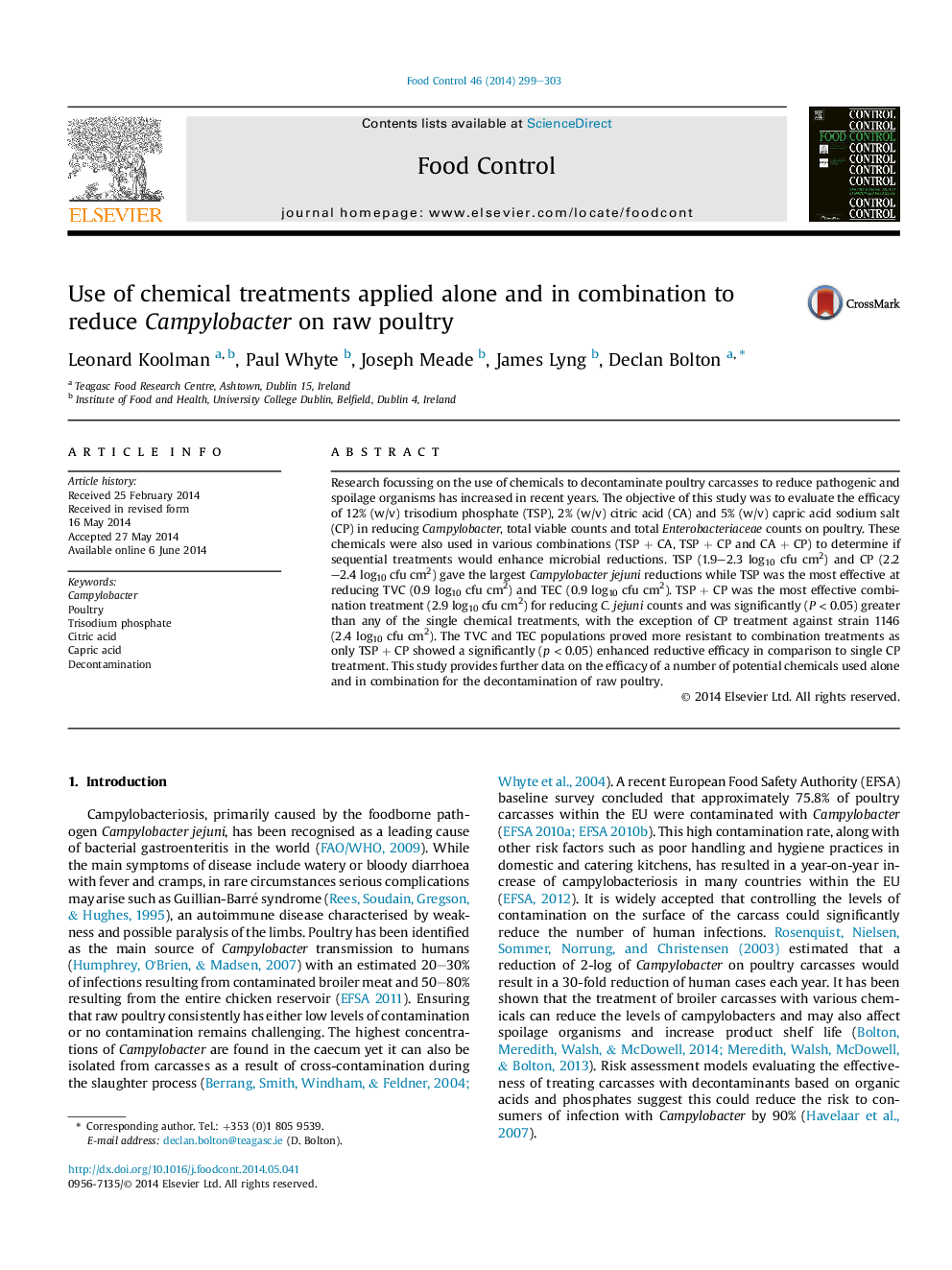| Article ID | Journal | Published Year | Pages | File Type |
|---|---|---|---|---|
| 6391230 | Food Control | 2014 | 5 Pages |
â¢In the single treatments, TSP (1.9-2.3 log10 cfu/cm2) achieved the largest Campylobacter jejuni reduction.â¢In the combination treatments, TSP + CP was the most effective (2.9 log10 cfu/cm2) for reducing C. jejuni.â¢TVC and TEC reductions were generally 1 log10 cfu/cm2 or less.
Research focussing on the use of chemicals to decontaminate poultry carcasses to reduce pathogenic and spoilage organisms has increased in recent years. The objective of this study was to evaluate the efficacy of 12% (w/v) trisodium phosphate (TSP), 2% (w/v) citric acid (CA) and 5% (w/v) capric acid sodium salt (CP) in reducing Campylobacter, total viable counts and total Enterobacteriaceae counts on poultry. These chemicals were also used in various combinations (TSP + CA, TSP + CP and CA + CP) to determine if sequential treatments would enhance microbial reductions. TSP (1.9-2.3 log10 cfu cm2) and CP (2.2-2.4 log10 cfu cm2) gave the largest Campylobacter jejuni reductions while TSP was the most effective at reducing TVC (0.9 log10 cfu cm2) and TEC (0.9 log10 cfu cm2). TSP + CP was the most effective combination treatment (2.9 log10 cfu cm2) for reducing C. jejuni counts and was significantly (P < 0.05) greater than any of the single chemical treatments, with the exception of CP treatment against strain 1146 (2.4 log10 cfu cm2). The TVC and TEC populations proved more resistant to combination treatments as only TSP + CP showed a significantly (p < 0.05) enhanced reductive efficacy in comparison to single CP treatment. This study provides further data on the efficacy of a number of potential chemicals used alone and in combination for the decontamination of raw poultry.
